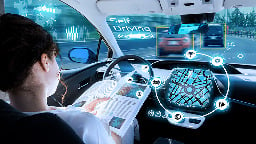Driverless cars worse at detecting children and darker-skinned pedestrians say scientists



kcl.ac.uk
Driverless cars worse at detecting children and darker-skinned pedestrians say scientists::Researchers call for tighter regulations following major age and race-based discrepancies in AI autonomous systems.
You are viewing a single comment
Conant and Ashby’s good regulator theorem in cybernetics says, “Every good regulator of a system must be a model of that system.”
The AI needs an accurate model of a human to predict how humans move. Predicting the path of a human is different than predicting the path of other objects. Humans can stand totally motionless, pivot, run across the street at a red light, suddenly stop, fall over from a heart attack, be curled up or splayed out drunk, slip backwards on some ice, etc. And it would be computationally costly, inaccurate, and pointless to model non-humans in these ways.
I also think trolley problem considerations come into play, but more like normativity in general. The consequences of driving quickly amongst humans is higher than amongst human height trees. I don’t mind if a car drives at a normal speed on a tree lined street, but it should slow down on a street lined with playing children who could jump out at anytime.
Thanks, you make some good points. (safe) human drivers drive differently in situations with a lot of people in them, and we need to replicate that in self-driving cars.
Anyone who quotes Ashby et al gets an upvote from me! I'm always so excited to see cybernetic thinking in the wild.